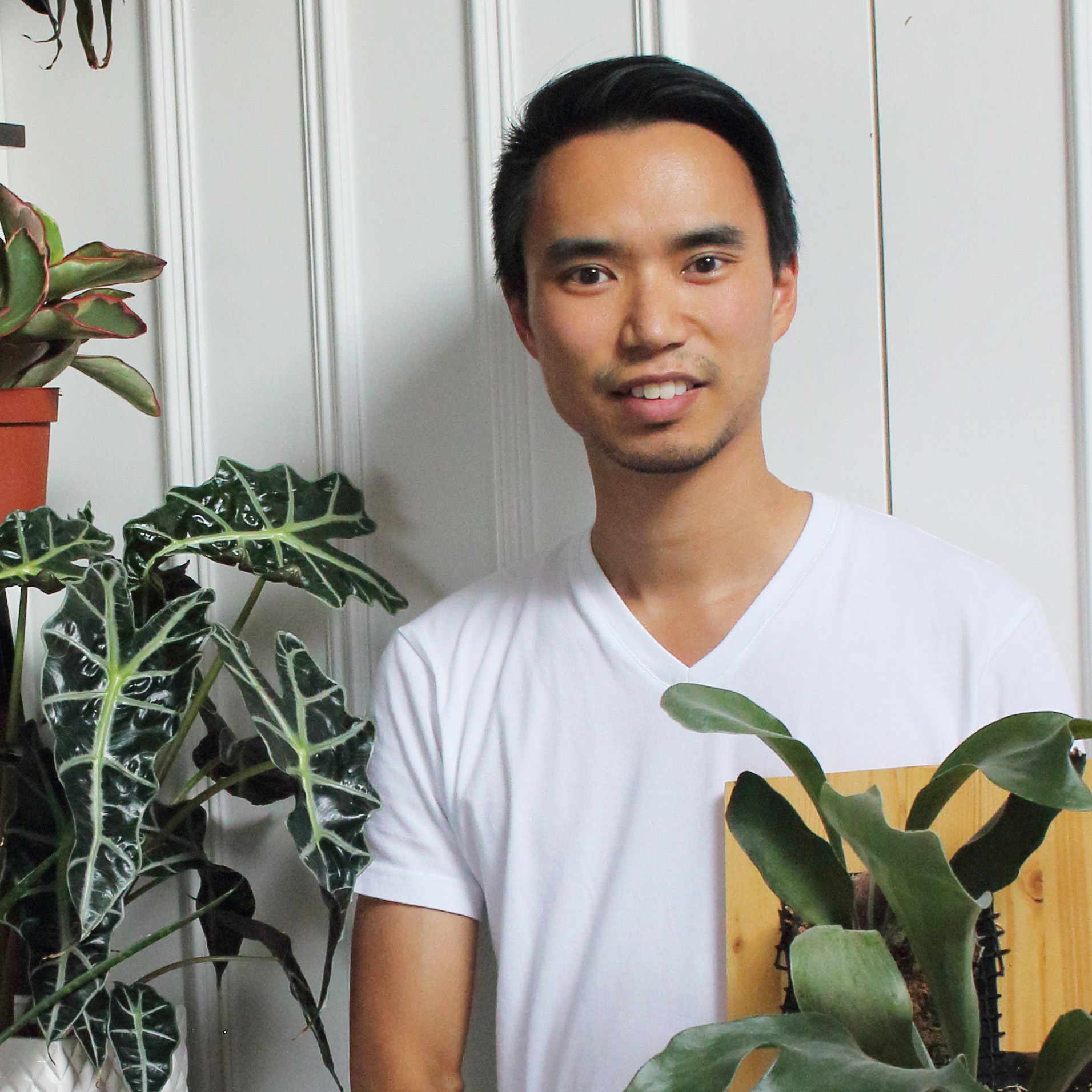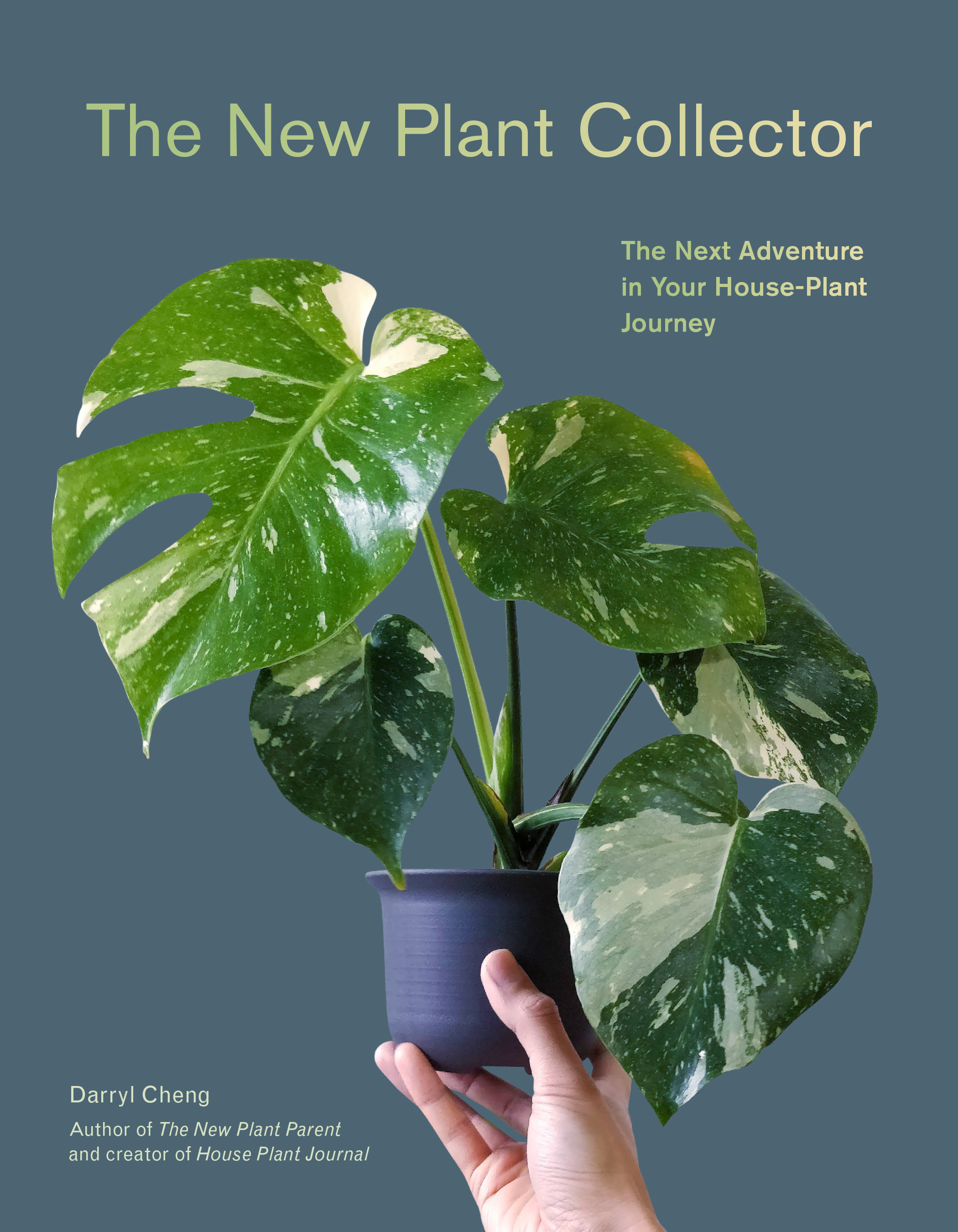In the late fall season, grocery stores and nurseries are filled with colorful blooming plants, commonly called Christmas cactus or Thanksgiving cactus…or even Zygocatus. If you’re confused by plant names, it may help to make this mental separation:
Common names: “What is this plant called?” (names given to a plant)
Botanical name: “What *is* this plant?” (the unique identifier)
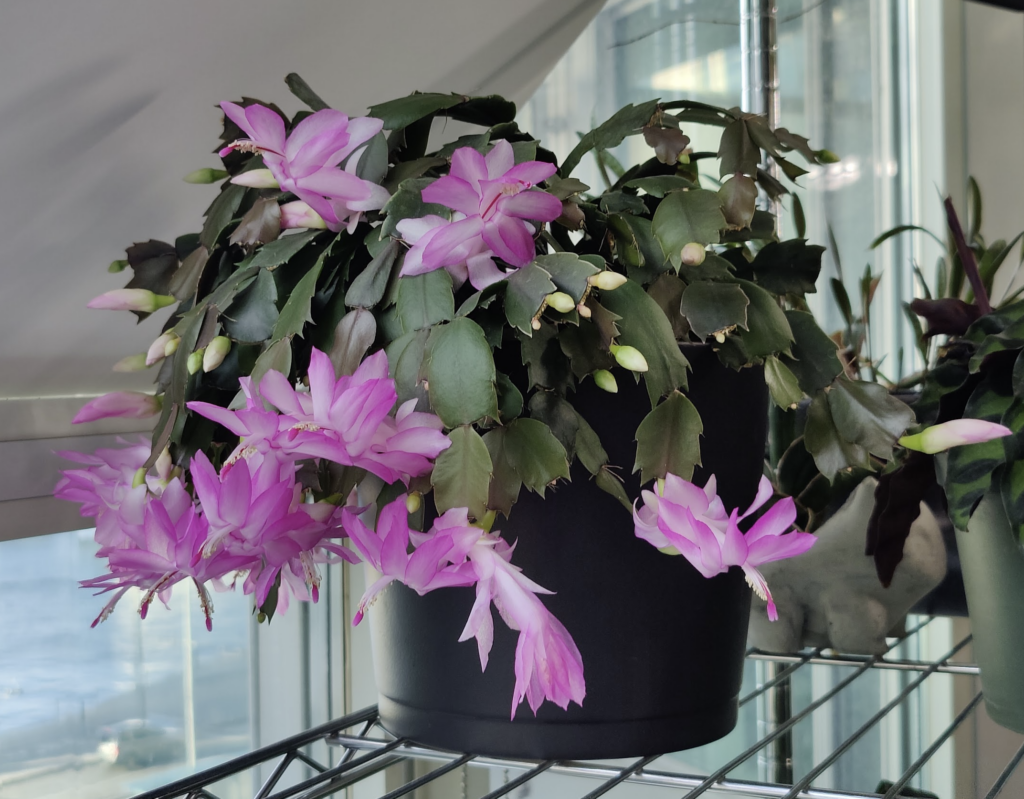
Common names are loosely applied by most people, but some try to be strict – “it’s not a Christmas cactus, it’s a Thanksgiving cactus” – but the basis for comparison should be grounded in the botanical names.
Schlumbergera truncata: primarily called Thanksgiving Cactus and loosely called False Christmas Cactus, but pretending to be systematic using common names just sounds silly. The plants you buy from the store, whatever they are labelled, are most likely all Schlumbergera truncata hybrids with different flower colors.
Schlumbergera x buckleyi: this is the true Christmas cactus, which is rarely sold in stores but you can often find them on Facebook Marketplace if you know what to look for since every listing will say “Christmas Cactus” regardless of what the plant actually is! The true Christmas cactus is a hybrid between S. russelliana and S. truncata. Schlumbergera bridgesii: this name was incorrectly published for a plant that was in fact the hybrid Schlumbergera x buckleyi.
And what’s with Zygocactus? The name Zygocactus used to be the genus name for these plants prior to being renamed to Schlumbergera. The name came from the term zygomorphic, which is a description of the S. truncata’s flower shape: bilateral symmetry (that is, having a mirror image of left vs right but not top to bottom) – another common plant with zygomorphic flowers is Phalaenopsis orchids.
Distinguishing Features of S. x buckleyi vs S. truncata
The green segments aren’t technically leaves. They are called phylloclades – and should be the first distinguishing feature you use to tell the difference between S. truncata and S. x buckleyi. S. truncata phylloclades are more pointed whereas S. x buckleyi are more rounded (or scalloped).
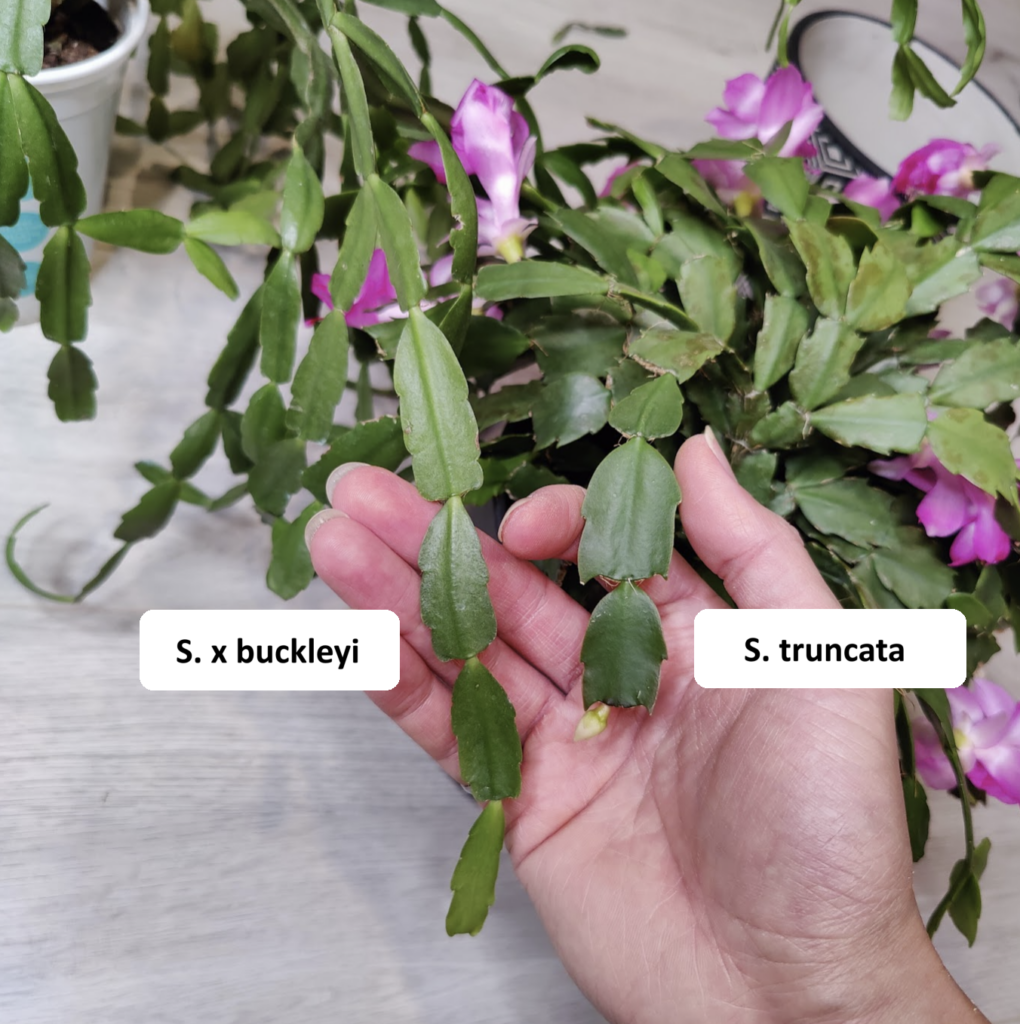
Once the flowers bloom, another distinguishing feature is whether the ovary is bent upwards or straight down (the ovary of the flower is the section of the flower where it connects to the phylloclade). S. x buckleyi flower point downwards while S. truncata flowers have a noticeable upward bend .
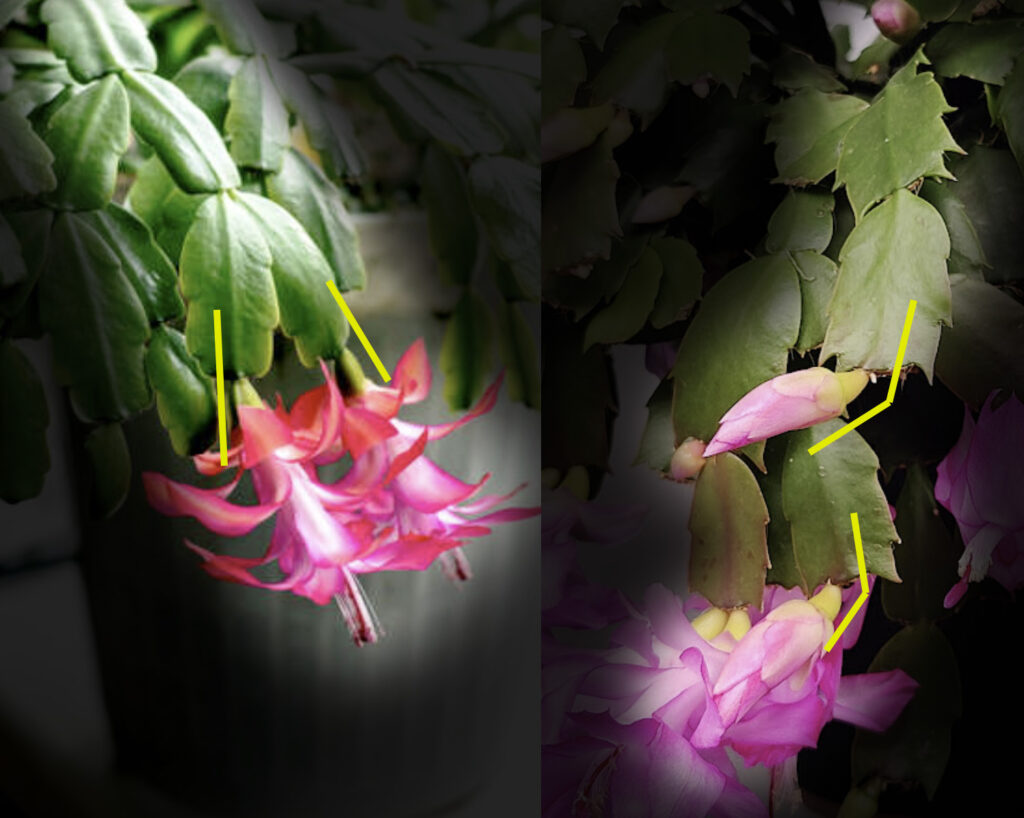
Accurate Tips for Encouraging Blooms
The following tips span several months – starting in the summer in order to achieve blooms by winter. Most other websites offer hand-wavy tips but I’m providing you suggestions with concrete data and observations from my own plants.
Tip 1: Strong light in the summer months
Producing flowers takes energy. The plant needs to store up enough energy in the form of carbohydrate production (through photosynthesis) so that when the buds are triggered, there will be many of them. If your plant is too far from the window, your plant will starve and just try to stay alive – there will be no energy to produce blooms.
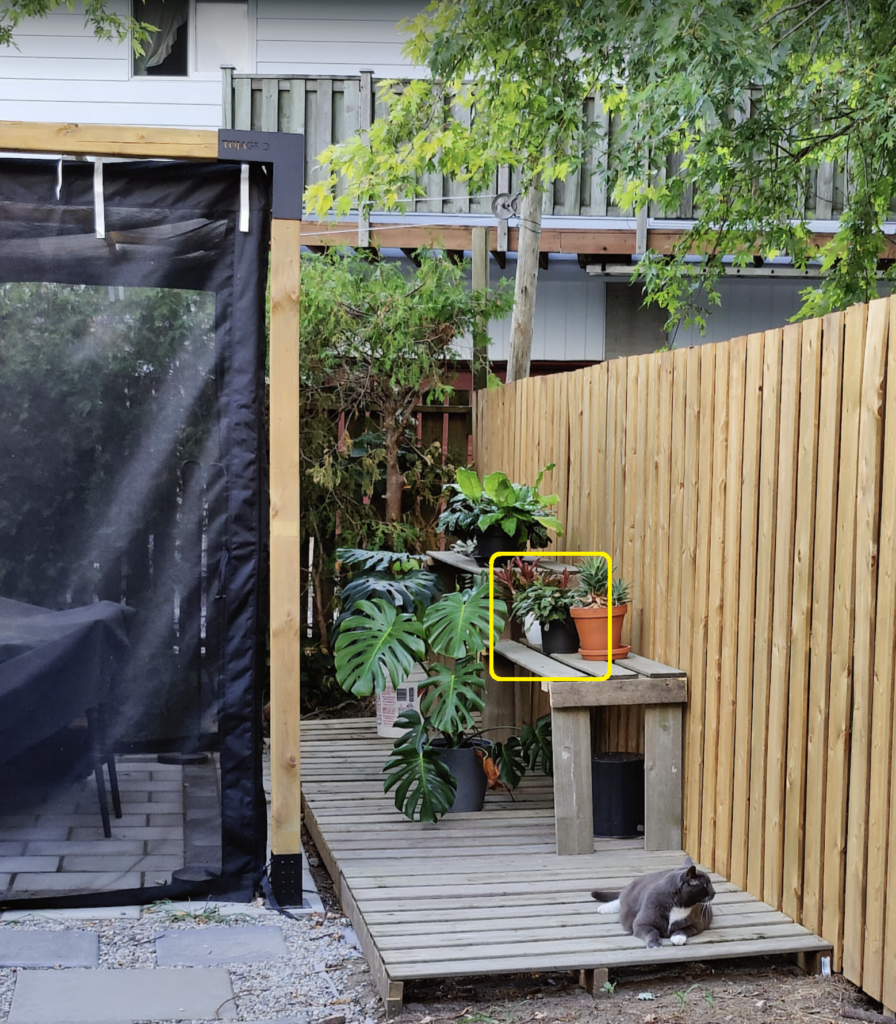
If you’re using grow lights, aim for 400-800 FC (80-160 µmol) for 12-16 hours a day – IMPORTANT: use this duration only during the non-flowering phase (I’ll explain why later).
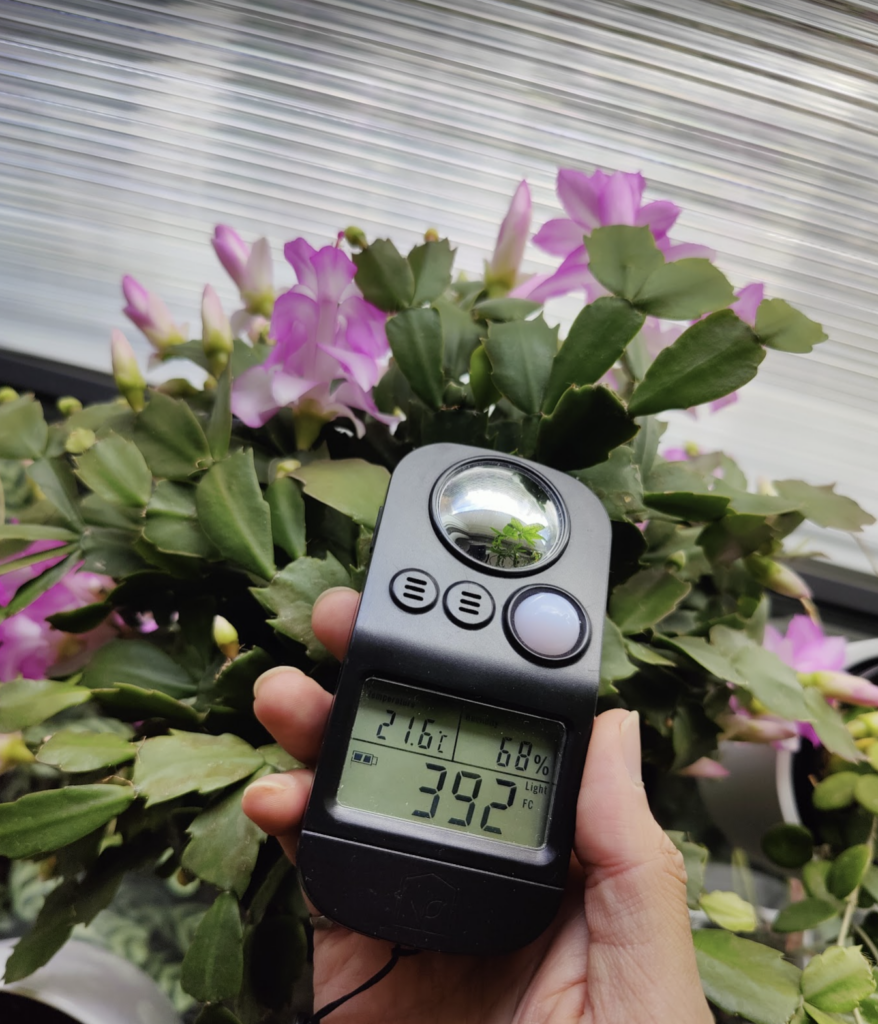
You need a light meter to know whether your indirect light or grow light is actually giving you 400-800 FC. Saying “bright indirect light” is useless.
Tip 2: Fertilize
When you’re pushing the plant with excellent light, you need to support the growth with nutrients. Any 3-1-2 fertilizer will do just fine. I like to use slow-release pellets mixed directly into the soil so the plant gets nutrients whenever it is watered. More about fertilizers here
Tip 3: Water appropriately
WHEN to water: whenever the substrate is completely dry but ideally before there is significant wilting in the phylloclades.
HOW to water: a nice thorough drenching to saturate all parts of the soil is good. Because of the long duration between waterings, the substrate can sometimes become very compacted. I sometimes gently loosen it with a chopstick prior to watering, which helps to achieve a more even saturation.
Tips 1 through 3 are essentially basic care that you’ll be doing throughout the warmer months. The next two tips deal with bud initiation as Fall/Winter approaches.
Tip 4a: Cooler temperatures at night
As we get into autumn, the evening temperatures will be cooler. This is exactly what Schlumbergera needs to trigger blooms: ideally, keep your plant OUTSIDE for around 3-4 weeks where the evening lows are around 10-15°C or 50-59°F. For my temperate climate in Toronto, Canada, this usually happens September through October.
If your evening temperatures won’t be that cool, then the next tip will be critical to follow!
Tip 4b: Longer uninterrupted darkness
Schlumbergera truncata and S. x buckleyi are called “short day” flowering plants, which is why they generally flower as we approach winter, when the days are shorter. But – fun fact – it’s not actually the short daylight that triggers bud initiation but it’s the longer darkness that matters. Even while daylight is shorter during winter, if an artificial light source is turned on near the plant at night (interrupting the darkness period), it may cause developing buds to die and fall off.
Here’s another fun fact: the reason why I classified the tips as 4a and 4b (instead of separately, 4 and 5) is because temperature and darkness length are RELATED in terms of triggering Schlumbergera flowering.
If temperatures reach 10-15°C (50-59°F), flowering is triggered regardless of darkness length.
If temperature range is 17-18°C (64-65°F), flowering is triggered with 12.5 hours of darkness per day.
If temperature range is 20-21°C (68-70°F), flowering is triggered with 14 hours of darkness per day.
This means if you live in a warmer region, you can still trigger flowering if you ensure your plant gets a daily uninterrupted darkness period of at least 14 hours per day.
Double Blooming
If your plant is growing exceptionally well (because you’re closely following Tips 1 through 3), it is possible to trigger blooms to occur twice within several months.
The way the plant can do this is if the first bloom is triggered by 10-15°C temperatures early in the fall and, once indoors, where temperatures are 20-21°C, the second blooms are triggered by 14 hours of darkness per day.
Please note that your specific climate/latitude/weather patterns will vary so this may not work for everyone (or even from year to year) – but here’s what happened with my S. truncata one year:
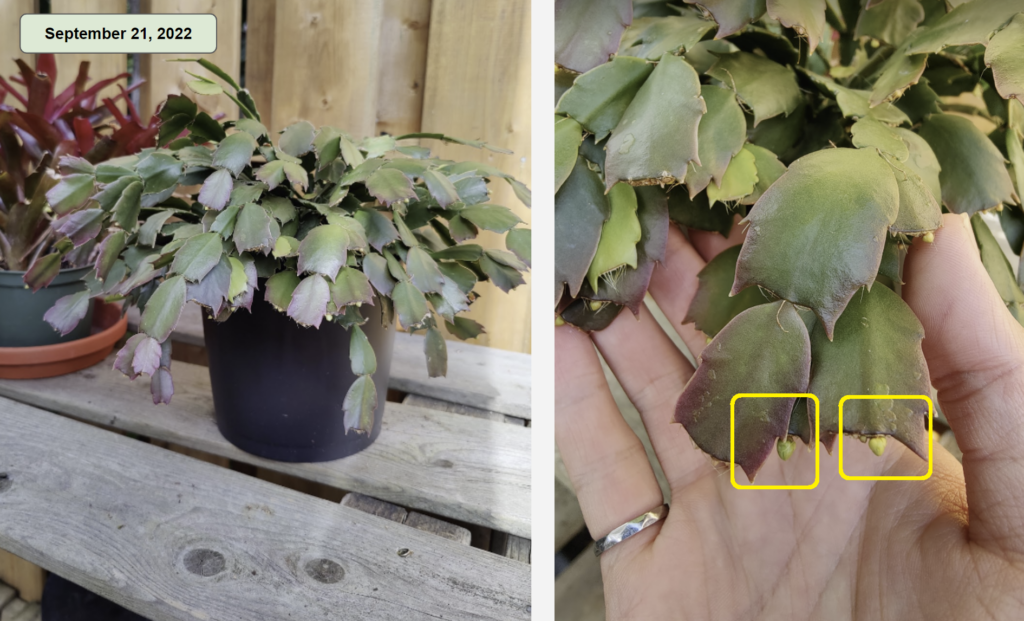
Lots of blooms by October!
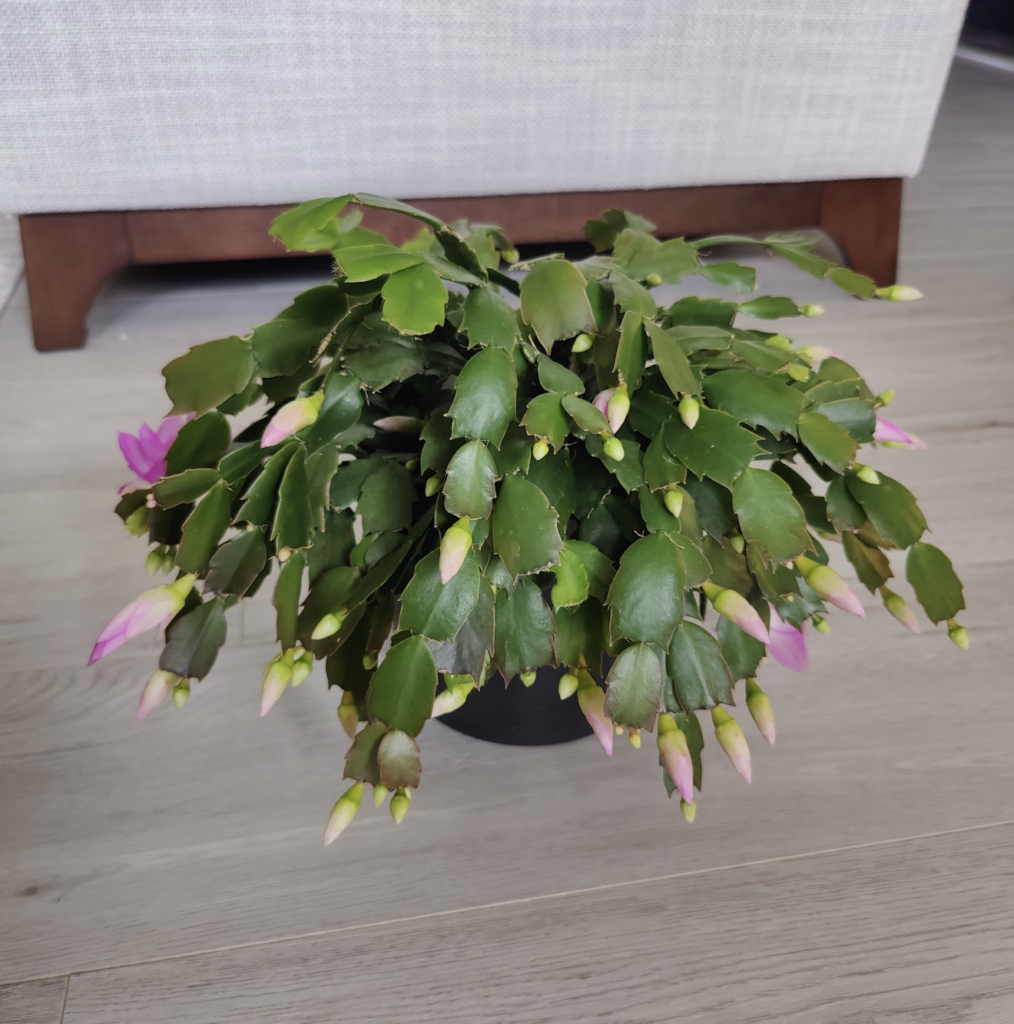
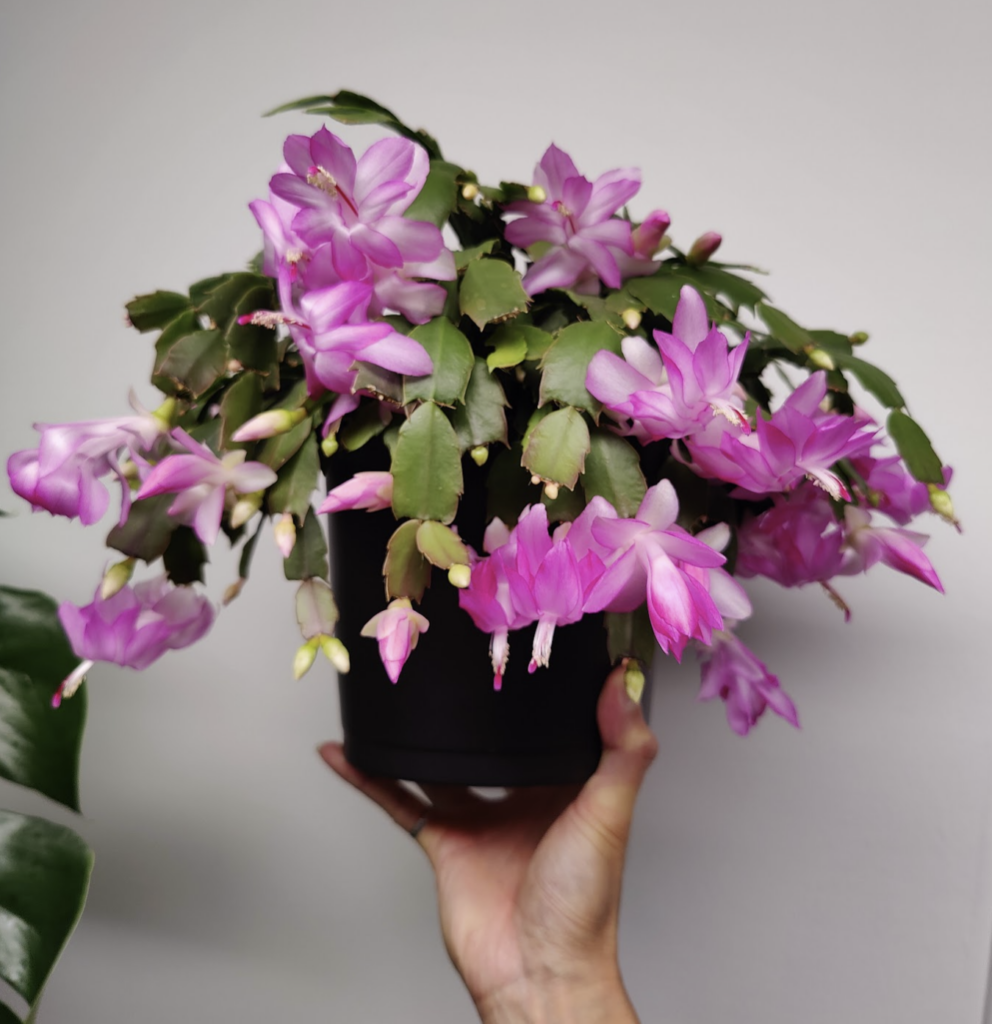
By early December, the plant was indoors with average room temperature (20-21°C) but uninterrupted darkness was more than 14 hours per day. Just for reference: at Toronto’s latitude, night duration at the beginning of November is about 14 hours, and lengthens to 15 hours by early December.
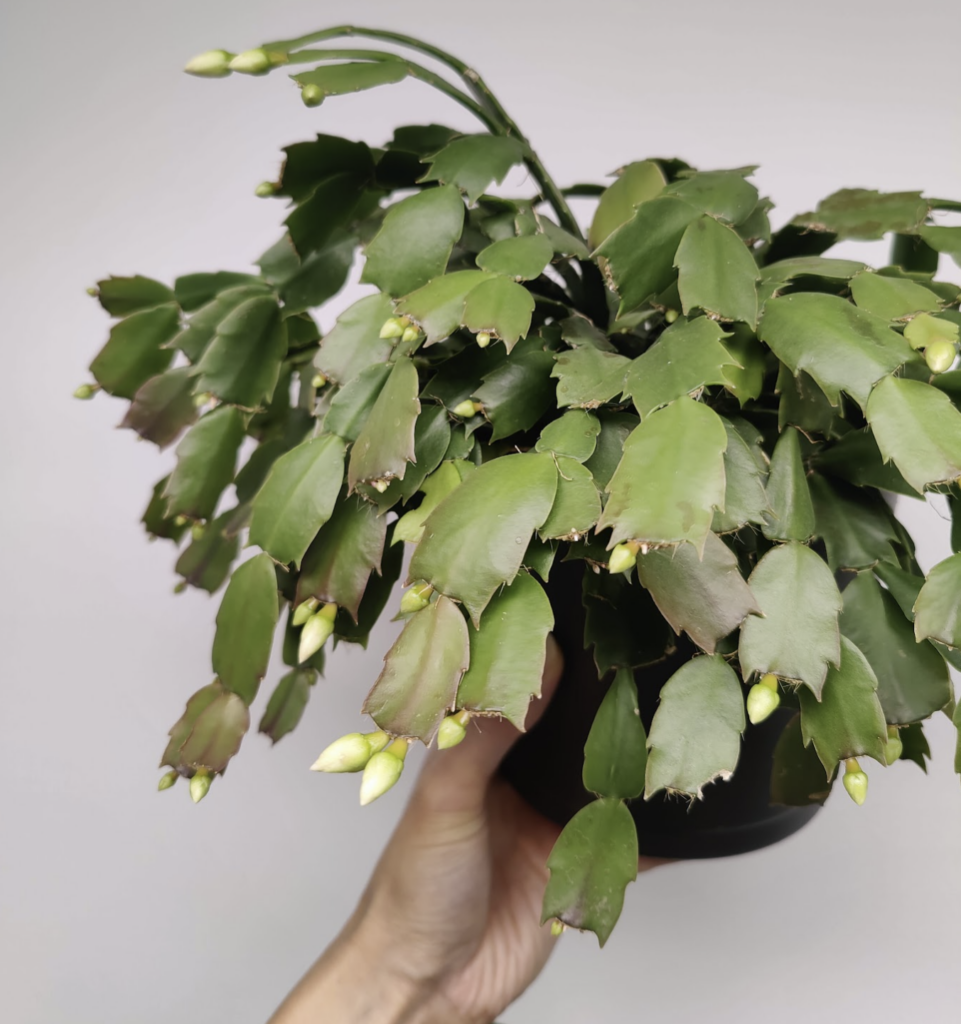
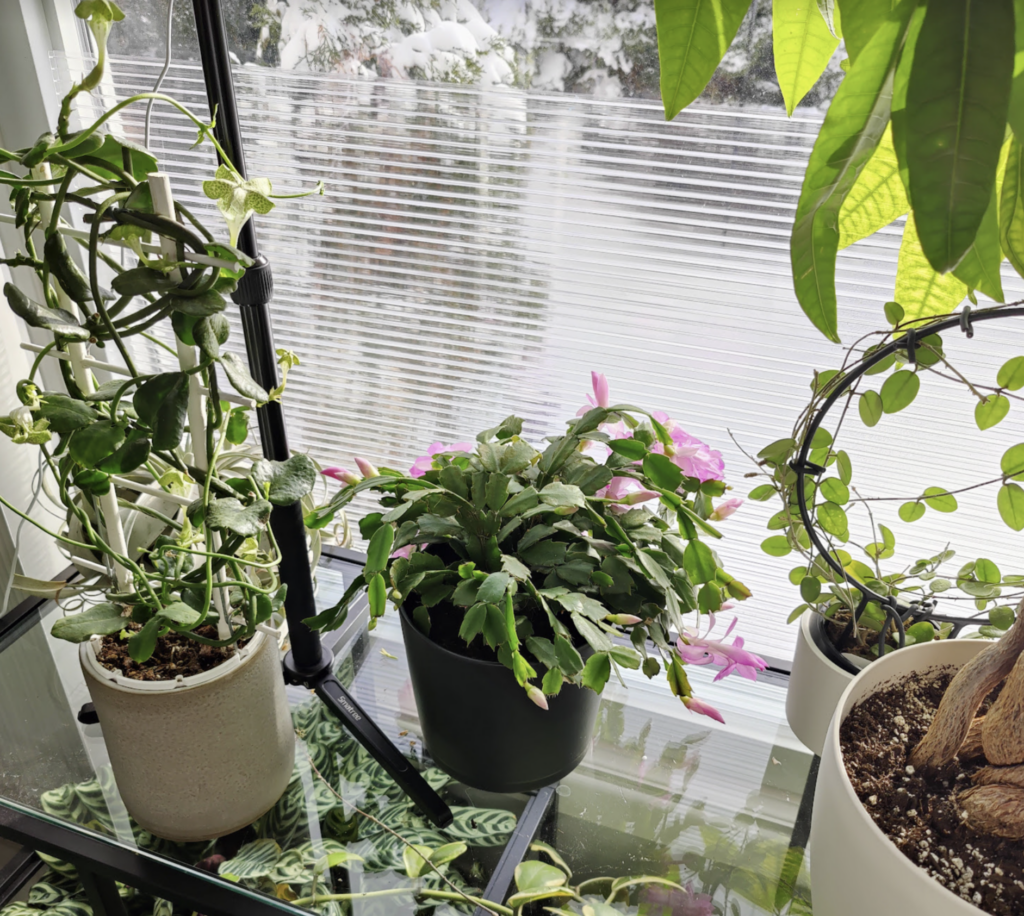
Both Schlumbergera truncata and S. buckleyi are wonderfully long-lived plants – the kind your grandmother grew for many years! With good light, the plant will become progressively longer as you enjoy yearly blooms. Every so often, it’s worthwhile to cut back the phylloclades so your plant doesn’t hang too far down – although this is a matter of taste, you can certainly let the plant trail down from a plant stand. Put those cuttings in water or directly into a well-draining potting mix and share the Schlumbergera joy with friends and family!
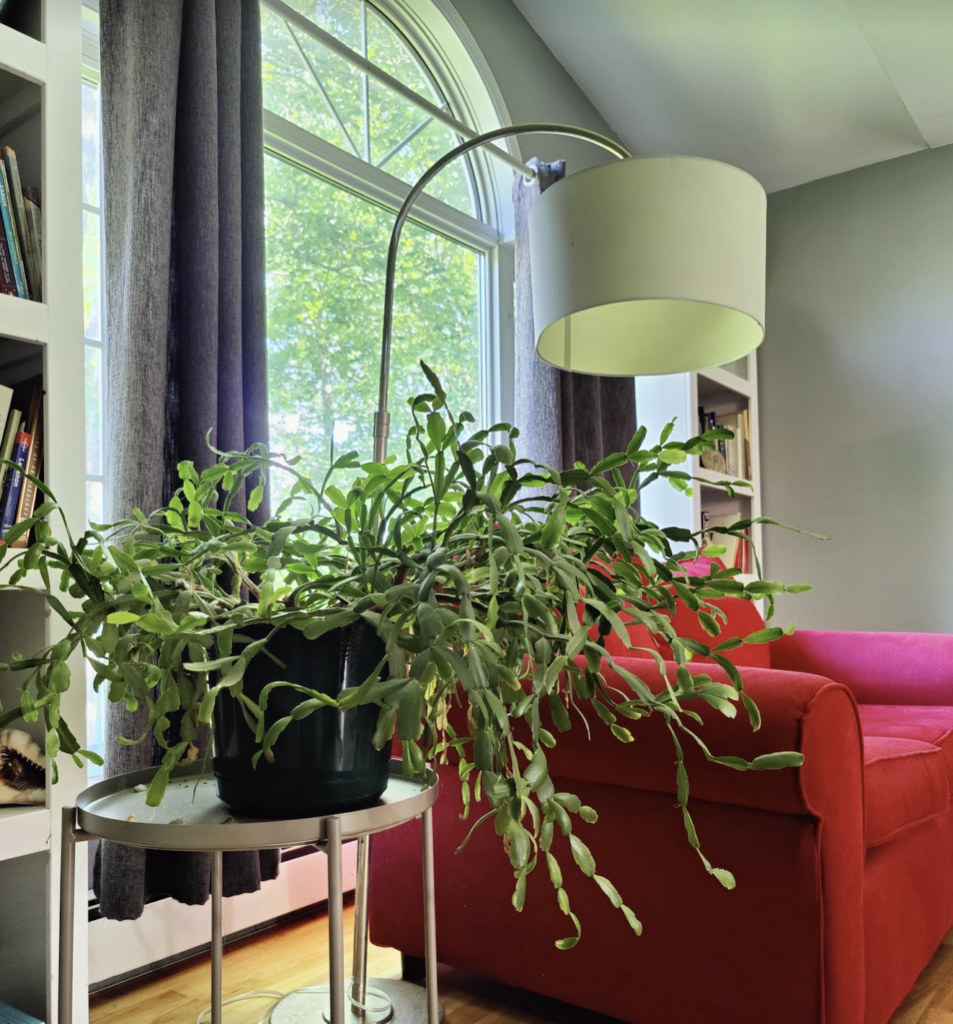
If you want to learn houseplant care in a systematic way (rather than blindly following random tips and tricks), check out my online course: Essentials of Houseplant Enjoyment
Or my book ‘The New Plant Parent‘
